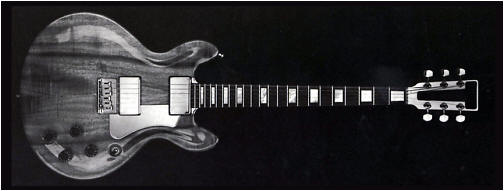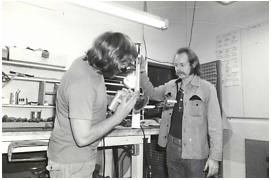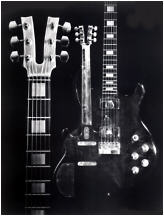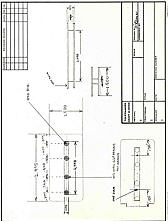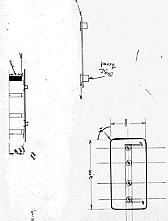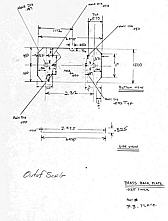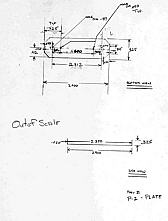The Official Kramer Story - as told by Gary Kramer
The history of Kramer Guitars is not only a history of a great American made guitar, but its also about a guitar that influenced rock history and the guitar industry for years to come. It is still one of the most recognized guitars on the planet thanks to Edward Van Halen and many other guitar legends who endorsed the brand. This is the story of the brand from my vantage point, of how the company got started, my role in the startup of the company, and how my involvement ended.
I started a partnership in the early 1970’s with Travis Bean to manufacture aluminum neck guitars under the name of Travis Bean Guitars. At this point, I would like to clear the record on this association as it has been recorded incorrectly on numerous occasions. Contrary to all of the unofficial stories that have been told, I spent several years working with Travis Bean as his partner, not just a sales representative.
| As the story begins, Travis Bean and myself started by setting up a shop in Sun Valley, California. This is where the first prototypes of the Travis Bean Guitar were made. I financed and founded the Travis Bean Guitar company because I saw the potential for an aluminum necked guitar. I would later see this foresight to fruition with our first booth at the Los Angeles N.A.M.M. (National Association of Music Merchants) show at the Marriott hotel. I had never been to a convention or taken orders from dealers across the country and it was a bit overwhelming at first. Though I did not know what to really expect, in the end I took approximately $75,000 worth of orders. My early feelings were founded as my marketing skills and business sense made them a reality. This was a very exciting time to see this company start to take off and I was very caught up in it. | 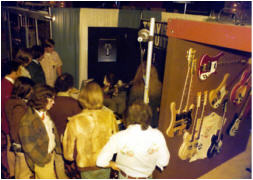 |
I took on the responsibility of taking the guitar around with me and showing all the local music stores this beautiful new instrument. My sample was a TB 1000 Artist booked matched koa with a clear finish, highly polished aluminum neck and stainless steel pick ups. The guitar looked like a jewel in its’ case. When I called on music stores to give a demonstration for the owners, as I myself was not a guitar player, I used to bring with me a guitarist named Glen; we called him “Lightning”. I had “Lightning” plug into a Marshall and bend a few strings and hold sustain, and boy did the Travis Bean sustain. The guitar sold itself not only with looks, but with its’ performance.
The TB 1000 Artist Guitar |
Among the many dealers that I had set up, was Gracin’s & Towne Music on 48th St. in New York, City. Bernie Gracin, the owner, loved the idea of an aluminum necked guitar. Gracin’s & Towne Music was my biggest dealer in New York City at the time. It was through this relationship that I met Dennis Berardi, who was partnered with Bernie Gracin. (To what extent their partnership reached, I do not recall.) This would become a very important friendship in the years to come.
If a guitar is too heavy it becomes uncomfortable to play and takes its toll on the player’s shoulder, which in turn will start to stress the arms and fatigue the player. What did all this mean? Our guitar wouldn’t be played for long periods of time on stage. This was not a good thing and I knew I could correct such a simple problem. I began to direct my efforts into what it would take to redesign the aluminum neck and secure a patent.
Through all my research I had done about patents I knew that I only needed to change one thing to get around Travis’ patent. I knew if I could replace some of the aluminum in the neck with wooden inserts, the guitar would be a great deal lighter, and warmer to the touch. At the time I had no idea how to do this, but I knew it could be done.
| This would solve the problem of an aluminum necked guitar being too heavy and would allow me to file my own patent (see image-right), without infringing on Travis Bean’s patent. An aluminum neck guitar was a completely new concept to the guitar world. In addition to lightening the guitar with the wooden inserts, it would also solve another problem of the neck remaining cold. Travis could no longer focus on the business of making guitars. He started to become interested in being a drummer and that began to take a priority in his life. I came to work one Monday morning to find that he had taken part of the production floor space and turned it into a garage style-recording studio. There were hundreds of egg cartons all over the walls. This must have taken him all weekend to build when we had guitars orders that needed to be filled. Our production area was limited in space as it was, and our orders for guitars were running late. |
 |
As all the responsibilities began to shift to me, due to Travis’ change of heart, I began the process of eliminating myself from the Travis Bean Guitar Company and start my own guitar company. I had tried to reason with Travis but it seemed quite useless to continue battling with his priorities. We had orders coming in and I was running out of excuses to give to our customers as to why their orders were not being shipped. The customers were upset rightly so as they had deposits on these orders. I did not like conducting business in this manner.
With the success I had created with the Travis Bean guitar I hoped that I could make my new founded dream a reality. I wanted to become the biggest guitar company in the country. By this time, I had obtained the knowledge that was needed for the manufacturing of guitars. When it came to making the Travis Bean guitar, I was involved in every aspect of design and production. I was not a person who would sit on the sidelines and hope everything would get done correctly. Quality was and still is very important to me.
I brought my idea to Dennis Berardi, who I had known through Bernie Gracin. Dennis also saw a winner in the aluminum neck guitar with my design changes. Dennis and I had become very good friends and I had often spent time socializing with him and his wife. In 1975, Dennis and I partnered together to form a new company we called BK International. It was set up to market Calzone flight cases. So, while Dennis drove into Manhattan, NY every day still working at Gracin’s, I went to Connecticut to work out the details with Joe Calzone. Dennis offered me the basement of his townhouse in Woodbridge, NJ to live in until I could find my own place. |
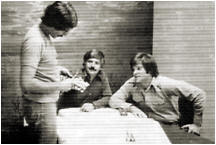 |
I didn’t have any real training as a draftsman, and I only learned to use a micrometer when I was with Travis, but the blue prints worked and the first pickup and parts started to come together. So, for the record, the first pickups used in all Kramer prototype guitars were my own design.
Bass Pickup Blue Print |
Bass Pickup Blue Print |
Humbucker Pickup Blue Print |
Single-Coil Pickup Blue Print |
Once we had a guitar we could hold in our hands, it was time to secure financing and marketing. Here is where Peter La Placa and Henry Vaccaro entered into the picture. I don’t remember who came first but I think it was Henry, which stands out in my mind because he gave us a check for $35,000.00. Henry Vaccaro owned the building located at 1111 Green Grove Road Neptune, NJ. He was very intrigued with the whole concept of aluminum being incorporated into the neck of a guitar.
 |
Kramer Guitars - 1111 Green Grove Road - Neptune, NJ |
Henry, at that time was not familiar with guitars in any aspect. He was like me when I first met Travis, just a businessman wanting a good return on his investment. Who would have ever thought that Henry Vaccaro would eventually wind up running and owning all of Kramer Guitars?
Dennis came to me one day and said he thought that bringing Peter La Placa into the company would be a good idea. I did not question Dennis’ judgment on this as Peter La Placa did work for Norland Music (Gibson).
At this point, I was already tired of living in New Jersey. The commute from Hackensack to Neptune was getting old. I felt that I had done my part on the creation of Kramer Guitars and that moving back to California and collecting royalties on what I had accomplished seemed to be the way to go. Peter and Dennis came up with a seemingly good plan to offer me; a buy-out agreement, collect royalties and represent Kramer Guitars as the West Coast artist public relations.
This plan sounded great and I couldn’t wait to get on the next plane headed for Los Angeles except that it seemed sad after all, Kramer Guitars was all I had, and it was hard to let go of all those dreams. Thinking that I would become the west coast artist public relations person for Kramer Guitars excited me. I would be back in California and still be part of the company that I started. Well, things did not work out as planned. Once again I found myself in a situation. Dennis was not returning my phone calls promptly and my royalty checks were not coming in. All things promised in the agreement seemed to disappear. I received a letter from Mr. La Placa one day and it went like this, “I am sorry that we haven’t been able to meet with the terms of our agreement, but business has not been good, etc.” I then knew that collecting any royalties and becoming the artist public relations for the west coast was just another dream.
At this juncture, I reluctantly retained an attorney to secure and protect my interest of the agreement with Kramer Guitars.
Through the years that followed, I never missed reading Guitar Player Magazine or any other publication that had to do with guitar players and, seeing famous guitarists playing a guitar with my name on the headstock; it made me feel so proud. In the end, all I ended up with was four guitars, one of which I gave to a friend because I owed him some money. The other three are still with me and they always will be. Kramer Guitars sadly ended in 1991 (mach 1), but the brand still carries recognition and respect among musicians and the guitar industry to this day.
So here I am again, starting yet another venture to further my vision about the way guitars should be made. Together with Leo we have made 3 prototype guitars in addition to several production models. The Delta Wing is our primary production prototype, utilizing top-notch design and construction efforts to further enhance mine and Leo's creative vision of Gary Kramer Guitars. We have additionally made other prototypes such as our "leather" guitar which is a unique style of wrapping a guitar with leather, similar in design to a steering wheel from an exotic car. The Delta Wing has been displayed at the Kramer Expo in 2005, and the 2006 Winter NAMM show in Anaheim, California. |
 |
© Copyright 2011 - Gary Kramer Guitar
This website and its contents are protected under US and International
Copyright Laws.
Gary Kramer Guitar Company is not related to or affiliated with
Gibson Musical Instruments of Nashville, Tennessee.





